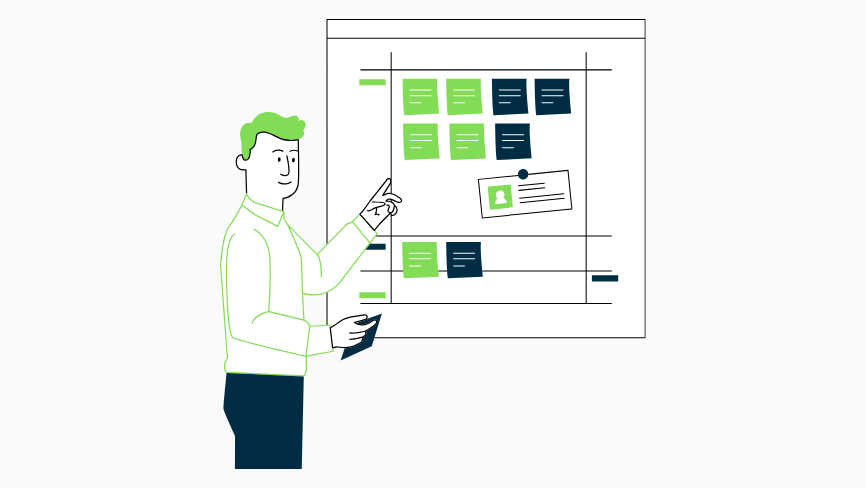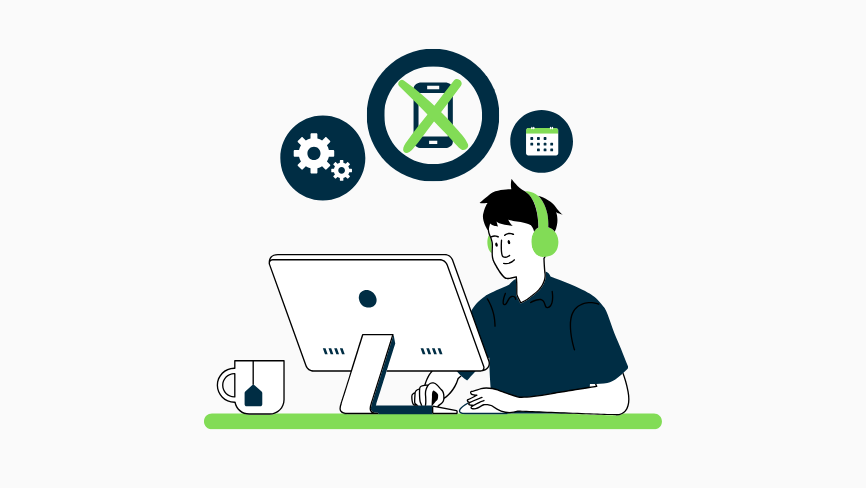Mastering Time Management: 5 Effective Practices
Time management is the foundation of productivity and success in both personal and professional life. In this blog post, we’ll dive into five essential time management practices that can transform the way you work and help you achieve your goals.

Prioritize Effectively
Effective prioritization is crucial for time management. To prioritize your tasks:
- The 2-Minute Rule: When faced with small tasks or requests that will take two minutes or less to complete, it’s often more efficient to tackle them immediately rather than adding them to your to-do list. This simple rule can help prevent minor tasks from piling up and becoming a source of stress.
- Weekly and Monthly Planning: In addition to daily task management, consider setting aside time each week and month for broader planning. On a weekly basis, review your goals, assess your progress, and adjust your priorities accordingly. On a monthly basis, take a step back to evaluate your long-term objectives and make any necessary adjustments to your strategies.
- The Art of Saying No: One of the most challenging aspects of time management is learning to say no to tasks or commitments that don’t align with your goals or overload your schedule. Politely declining requests that aren’t essential can free up valuable time for more important things. Remember, every yes to something is a no to something else.
- Continuous Learning: Staying up-to-date with time management techniques and productivity tools can significantly improve your skills. Consider reading books, attending workshops, or following online resources dedicated to time management. Keep an eye out for new apps or methods that might suit your evolving needs.
- The Importance of Rest and Recovery: While managing your time efficiently is crucial, it’s equally essential to prioritize rest and recovery. Adequate sleep, a balanced diet, and regular exercise can have a profound impact on your energy levels and overall productivity. Don’t neglect self-care in your quest for better time management.

Schedule Strategic Breaks
Scheduled breaks are not just a luxury; they are essential for maintaining productivity. To schedule effective breaks:
- The Power of Breaks: Understand that breaks aren’t a sign of slacking off but a boost for creativity and focus. For example, try the Pomodoro Technique, which involves 25-minute work intervals followed by a 5-minute break.
- Techniques for Effective Break Scheduling: Experiment with different break lengths to find what suits you best. Some people benefit from a short, intense break, while others prefer a longer, more leisurely one.
- Combating Distractions during Breaks: Use your breaks to step away from your workspace. Stretch, meditate, or take a short walk to clear your mind. Disconnect from digital distractions to return to work recharged.

Limit Distractions
Managing distractions is critical for maintaining productivity. To limit distractions:
- Identifying Common Workplace Distractions: Recognize that distractions come in many forms. It could be a noisy coworker, a cluttered desk, or constant notifications on your phone. Address these issues proactively.
- Strategies for a Distraction-Free Workspace: Consider noise-canceling headphones, a tidy workspace with only necessary items, and the “Do Not Disturb” feature on your devices. Establish clear boundaries with colleagues when you need focused work time.
- Tools for Digital Distraction Management: Utilize apps like Freedom or Cold Turkey to block distracting websites and apps during work hours. These tools can help you stay on track.

Get Organized
Organization streamlines your workflow and saves precious time. To get organized:
- Decluttering Your Workspace: Regularly go through your workspace and eliminate items you no longer need. An organized workspace reduces visual clutter and improves focus.
- Digital Organization Tips: Create well-labeled folders for your digital files and use email filters to automatically sort incoming messages. Consider using project management software to keep track of tasks and deadlines.
- Time-Saving Organization Apps: Explore apps like Trello for task management, Evernote for note-taking and organizing ideas, and time tracking apps like Kimai Mobile for managing time spent on tasks and managing procrastination.

Understand Your Peaks and Valleys
Recognizing your peak productivity times and low-energy periods can optimize your schedule:
- Identifying Your Peak Productivity Times: Keep a journal for a week to note when you feel most alert and productive. It could be early morning, mid-afternoon, or late evening.
- Strategies for Tackling Low-Energy Periods: Plan less demanding tasks during your low-energy times. For example, use these periods for brainstorming, reading, or organizing rather than critical decision-making.
- Adapting Your Schedule to Your Rhythms: Adjust your daily schedule to align with your natural productivity rhythms. If you’re a morning person, tackle your most important tasks in the morning and save administrative work for later in the day.
By implementing these time management practices and tailoring them to your unique needs and preferences, you’ll not only become more productive but also find a better work-life balance.


